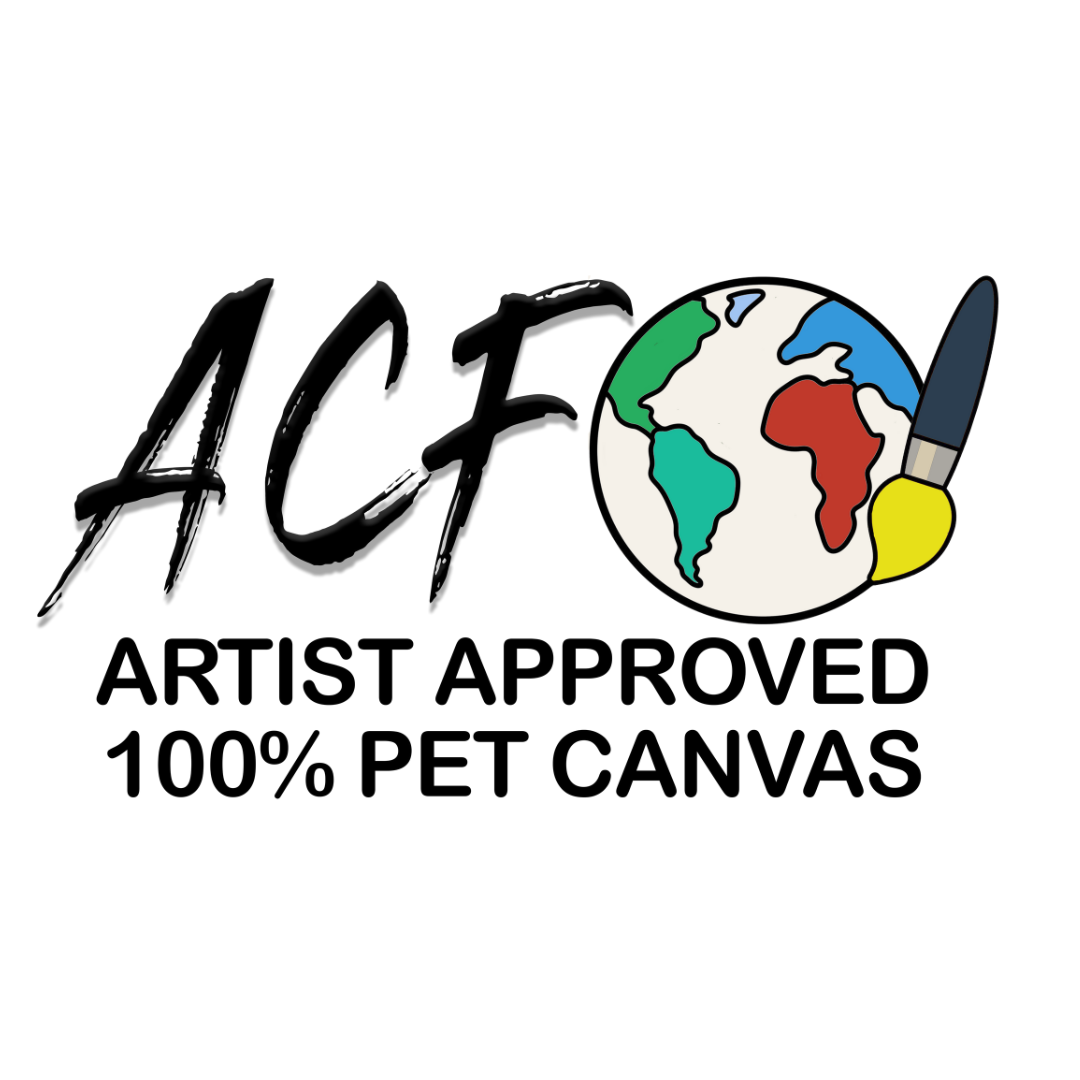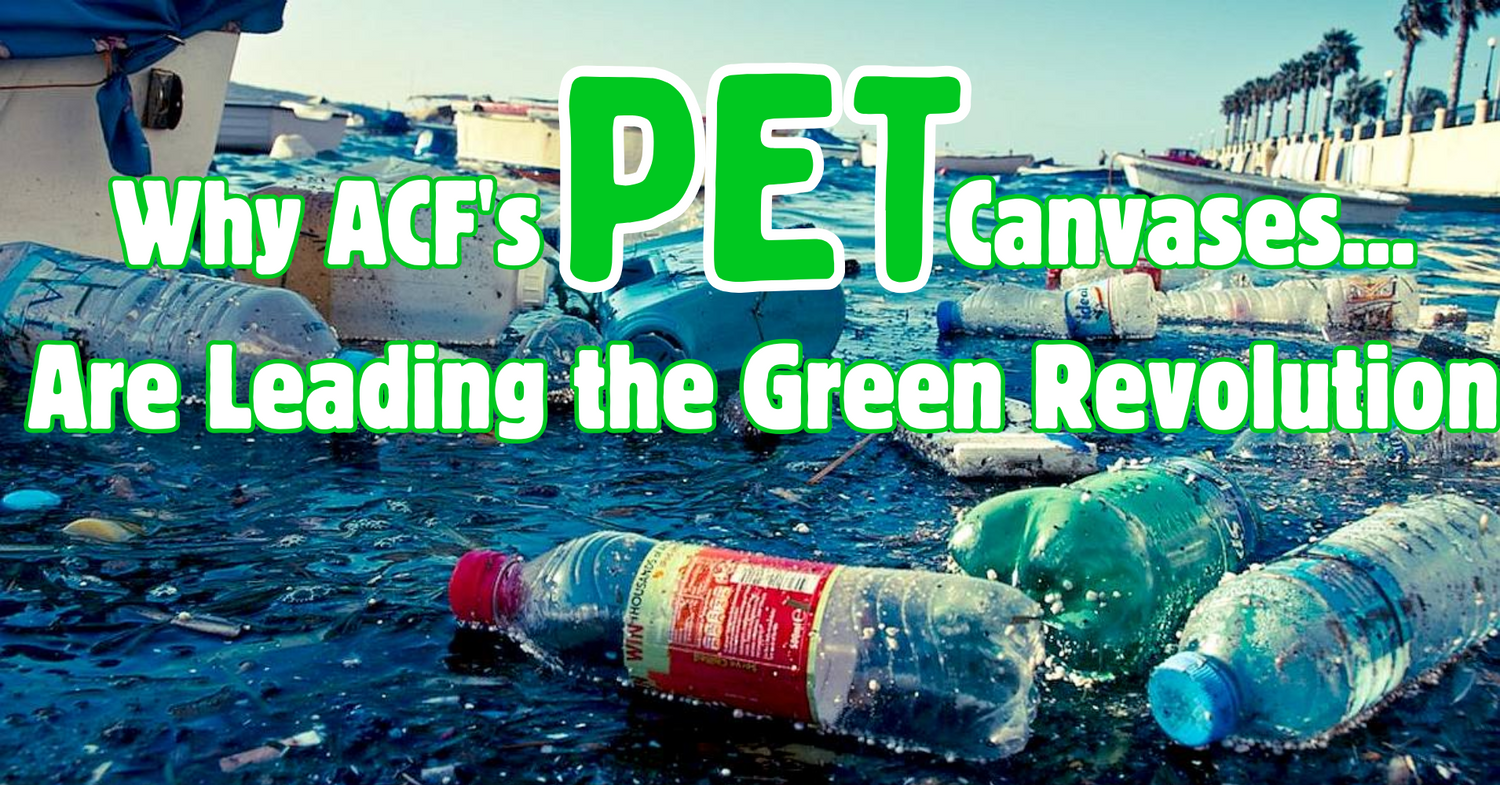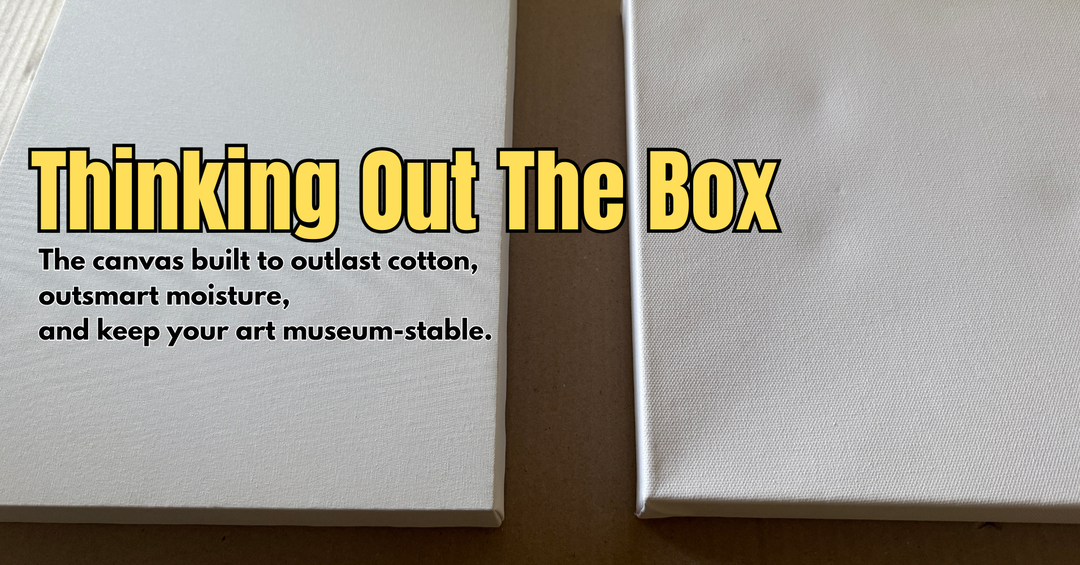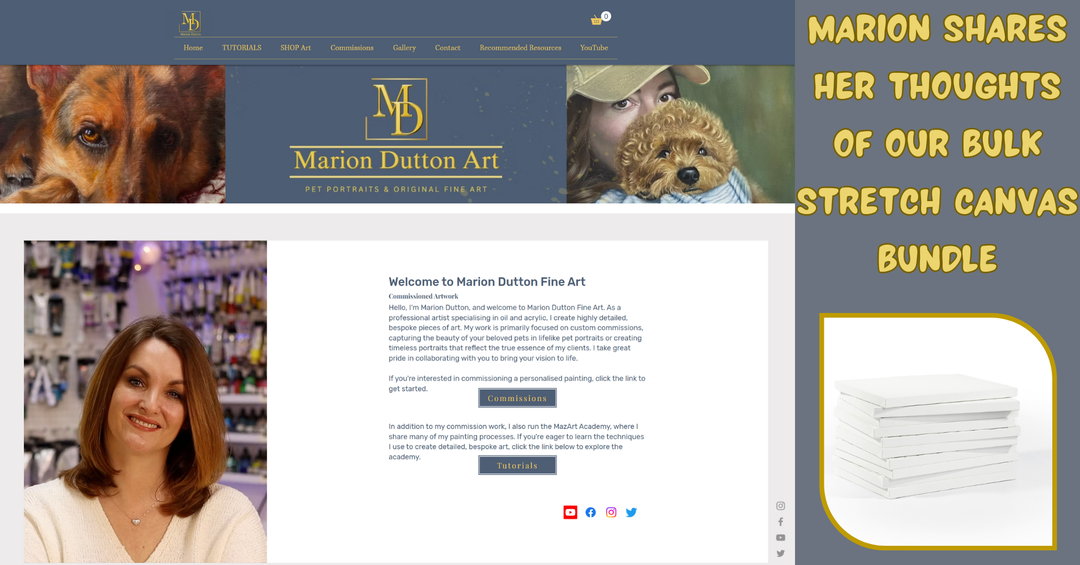In the world of art supplies, sustainability often sparks heated debates. Critics quick to label polyester as "plastic pollution" overlook the nuanced reality: when produced responsibly, materials like our 100% recyclable PET (polyethylene terephthalate) canvases at ACF outperform traditional options like cotton (and Linen) in environmental efficiency.

At ACF, sustainability isn't a buzzword—it's the core of our operations. From our factory in Sub-Saharan Africa to the final product in your studio, we're committed to smarter materials for a cleaner planet. Let's dive into how we make this happen, and why eco-conscious artists should consider the bigger picture beyond just the canvas.
Our journey starts with the material itself. ACF canvases are crafted from 100% PET, a fully recyclable polymer that's stable, long-lasting, and far greener than it gets credit for. Unlike cotton, which guzzles up to 20,000 liters of water per kilogram and relies on pesticides that harm ecosystems, PET production uses significantly less water and land. But we don't stop at the raw material—we've embedded eco-practices throughout manufacturing to minimize our footprint.

Water scarcity is a pressing issue in Sub-Saharan Africa, exacerbated by climate change. That's why our plant employs a closed-loop water reticulation system during wet processing. This innovation reuses 30-40% of process water, slashing consumption and wastewater output.

By conserving this vital resource, we're not just protecting the environment; we're ensuring future generations have access to it. This system reduces our overall impact, proving that textile production can be water-wise without compromising quality.
Energy efficiency is another pillar. Textile manufacturing generates waste heat that traditionally vents into the atmosphere, contributing to global warming. At ACF, we've installed a closed-loop heat exchanger that captures this heat and repurposes it to warm water for other processes—from room temperature to 60°C.
This cuts energy needs, lowers greenhouse gas emissions, and promotes a more circular production model. Our Deep Edge and Thin Edge Canvas Ranges benefit directly from this, ensuring every stretch of canvas is made with minimal environmental cost.

Waste management? We've got that covered too. Polyester offcuts from weaving could end up in landfills, but we partner with recyclers and local organizations to repurpose them. A big chunk gets recycled into new fibers for non-woven fabrics, reducing virgin material use.
The rest fuels creative upcycling: school bags, beds for the homeless, hand-woven rugs, and even traditional artwork by local vendors. This not only diverts waste but empowers communities. Our WaterColour and Recycled Ranges embody this ethos, blending functionality with zero-waste ambition.
Material selection is scrutinized for health and environmental impacts. We've eliminated chlorinated compounds from acrylic coatings, swapped harmful APEOs for eco-friendly surfactants, and transitioned to safer C6 fluorocarbons—aiming for fluoro-free alternatives soon. These choices ensure our canvases are safe for artists and the planet, without sacrificing performance.

Now, to the 'green' skeptics who champion natural fibers while ignoring their own toolkit: let's talk consumables. Your synthetic paintbrushes, often made from nylon or polyester, rely on fossil fuels and aren't always recyclable, contributing to microplastics if discarded improperly. Acrylic paints, while water-based and low-VOC, derive from petrochemicals and contain heavy metals that linger in landfills—only 1-2% of paints get recycled globally. Even natural brushes raise animal welfare concerns.

It's easy to bash polyester canvases, but true sustainability demands a holistic view. If you're using these supplies on a cotton canvas (with its massive water and pesticide footprint), you're not as eco-friendly as you think. At ACF, our recyclable PET closes the loop where others fall short, encouraging artists to audit their entire process.
In conclusion, ACF's commitment is evident at every step—from innovative systems to community partnerships.

Visit our sustainability page at acfcanvasses.com/pages/sustainability for more details. We're not perfect, but we're pushing boundaries to make art that's kind to the Earth.
Join us in this nuanced journey—because great art deserves a sustainable legacy.




Leave a comment
This site is protected by hCaptcha and the hCaptcha Privacy Policy and Terms of Service apply.